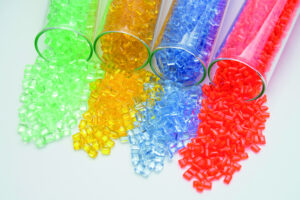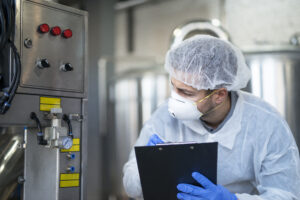Industrial sifters are key pieces of equipment in many food and pharmaceutical processing plants. As something that regularly comes into contact with raw materials and other components, they play an important role in establishing a sanitary environment and bringing safer products to market – as well as in maintaining compliance with USDA and FDA requirements.
Understanding Your Compliance Requirements
The FDA and USDA require that the following organizations have a HACCP (hazard analysis and critical control points) management system in place:
- Meat producers
- Seafood producers
- Juice producers
- Any organization registered under the Public Health Security and Bioterrorism Preparedness and Response Act
An HACCP system involves identifying critical control points where biological, chemical or physical factors can render a food product unsafe. In many organizations, sieves and sifters are one of those points. Let’s look at a few things you need to know about FDA- and USDA-compliant industrial sifter machines.
Industrial Sifters Keep Foreign Materials Out of Foods
The main role that an industrial food sifter machine plays in preventing food contamination is obvious – its purpose is to screen out contaminants and separate useable raw materials from waste. This can involve everything from removing stones and glass from mechanically harvested products – something that is often accomplished with a USDA-compliant industrial sifter such as the VibraScreener™ Bison Separator™ – filtering out contaminants from flours and other fine powders, or clarifying fruit juices.
The essential thing in maintaining an FDA-compliant industrial sifter is to ensure the appropriate screening media is in place and the machine is routinely tested and maintained for proper operation.
Sifters Themselves Can Be Potential Contamination Sites
In addition to the important role they play in removing contaminants from food products, industrial sifter machines are themselves a potential site for contamination, particularly when not properly cleaned and disinfected. A USDA- or FDA-compliant industrial sifter will only be effective if it is operating in a sanitary manner.
To ensure this, look for a machine with a gap-free design and small footprint – a smaller machine means less potential for contamination, while gaps are breeding grounds for bacteria. An industrial sifter should also be easy to take apart and disinfect, which will reduce the risk of corners being cut to maintain productivity. Finally, in facilities that handle fine powders, a machine equipped with a bag-tipping platform and dust hood connection will help prevent cross-contamination.
Finding an FDA-Compliant Industrial Sifter
Ensuring your industrial sifter is FDA- and USDA-compliant involves establishing appropriate policies and choosing a machine that will make them easier to implement. To learn more about the role VibraScreener™ equipment can play in your facility, keep browsing our website or get in touch with a sales representative directly.





